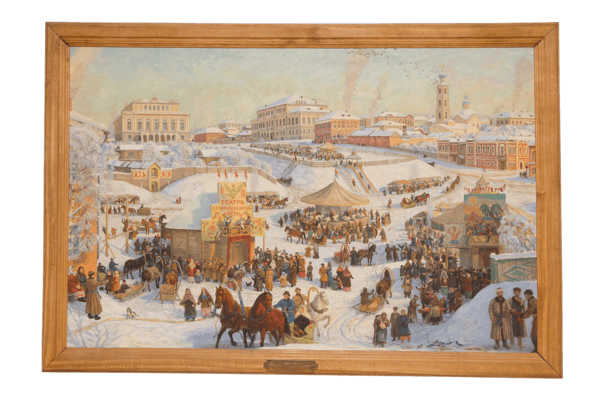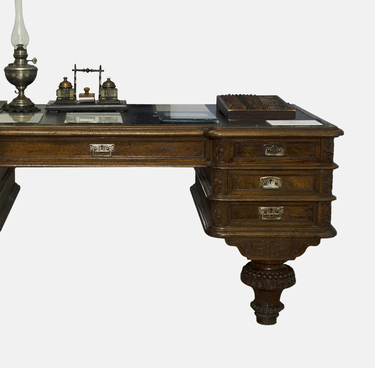The painting “Maslenitsa in Kazan in 1883” was commissioned by the museum for the exhibition “Feodor Chaliapin and Kazan”. Its plot is based on the folk festivities that the young Feodor Chaliapin loved to attend in his hometown.
In Kazan, the Chaliapins lived not far from Nikolayevskaya Square, which is currently known as Leninsky Sad (Lenin’s Garden). That place hosted big city festivals, there were merry-go-rounds, fairs, games and various amusements. A military band performed the song called “Kamarinskaya”, and clowns with weather-beaten faces made faces and cracked jokes.
The 10-year-old Chaliapin was particularly delighted by the street circus of Yakov Mamonov. The artist, acrobat and gymnast invited everyone into his “Theater of Spiritism and Magic”, where he performed magic tricks. Later Feodor learned that Yakov Mamonov was a shoemaker by trade, and his first troupe consisted of apprentices of his workshop, his wife and his son.
The young Chaliapin viewed Mamonov as an example of someone who had faith in their calling and stuck to it — the boy himself lived in poverty, and his dreams of performing on stage seemed unrealistic. At home, little Fedya loved to play the game of “Yashka” by dressing in his mother’s clothes and pretending to be someone else.
“If they did not strike the first spark in me, they did awaken my soul, and thereafter I simply longed for the life of the artist. To Yashka, who gave of himself so unsparingly, do I owe my first real interest in the theater, that ‘great spectacle’ that was to be for me the reverse of reality.”
The boy was always heartbroken when Lent came and put
an end to the holiday. In his book “Pages from My Life”, Feodor Chaliapin later
wrote,



